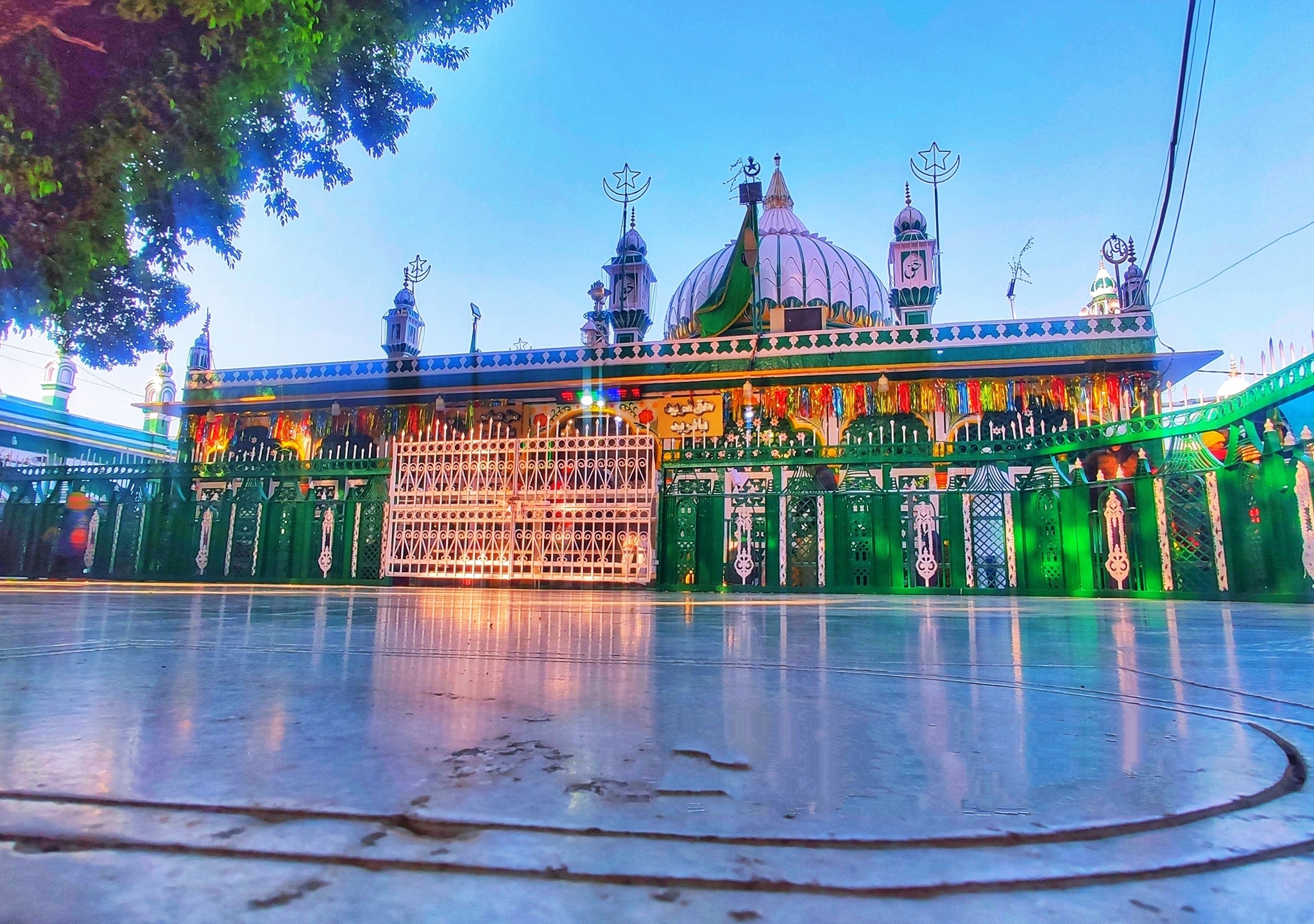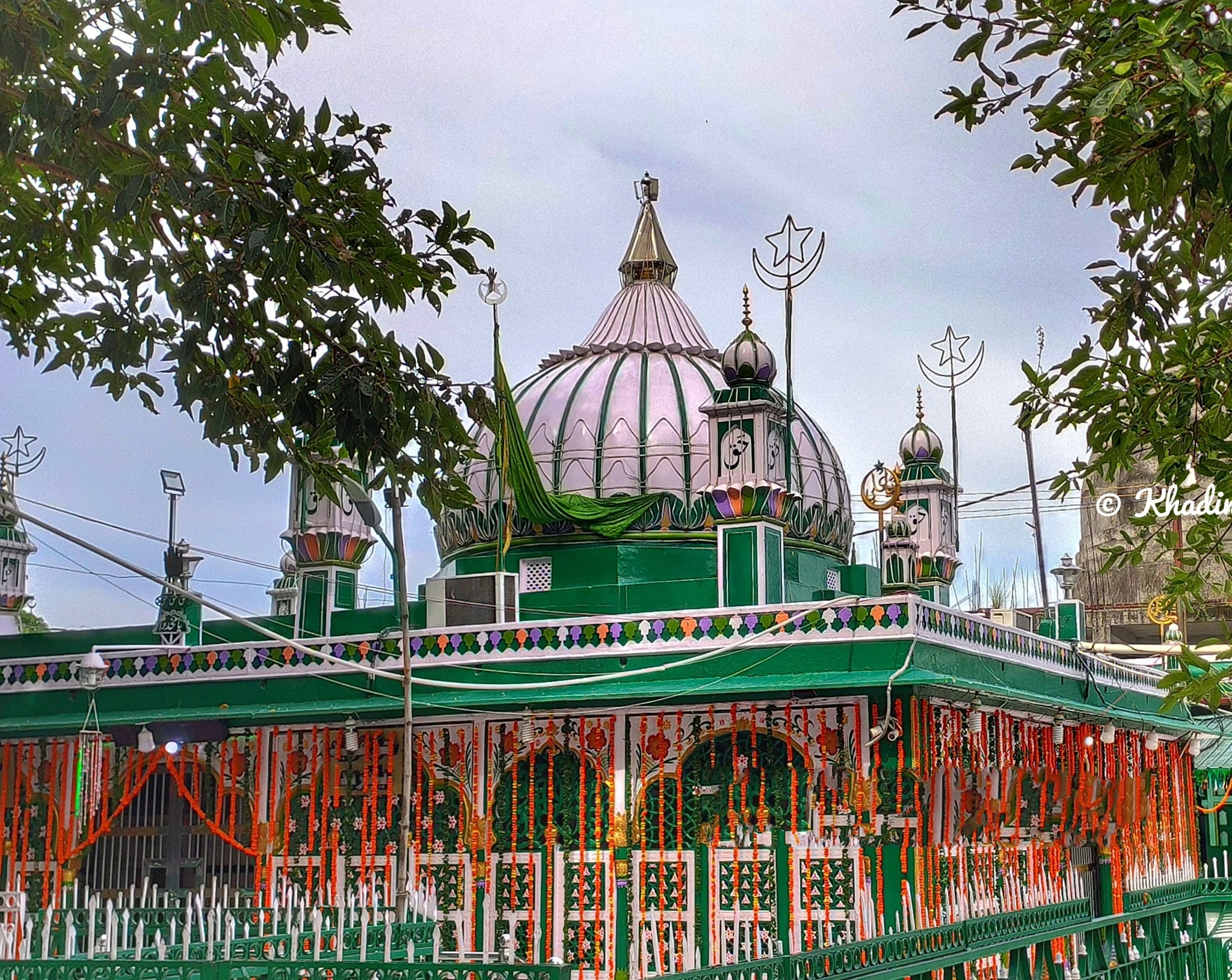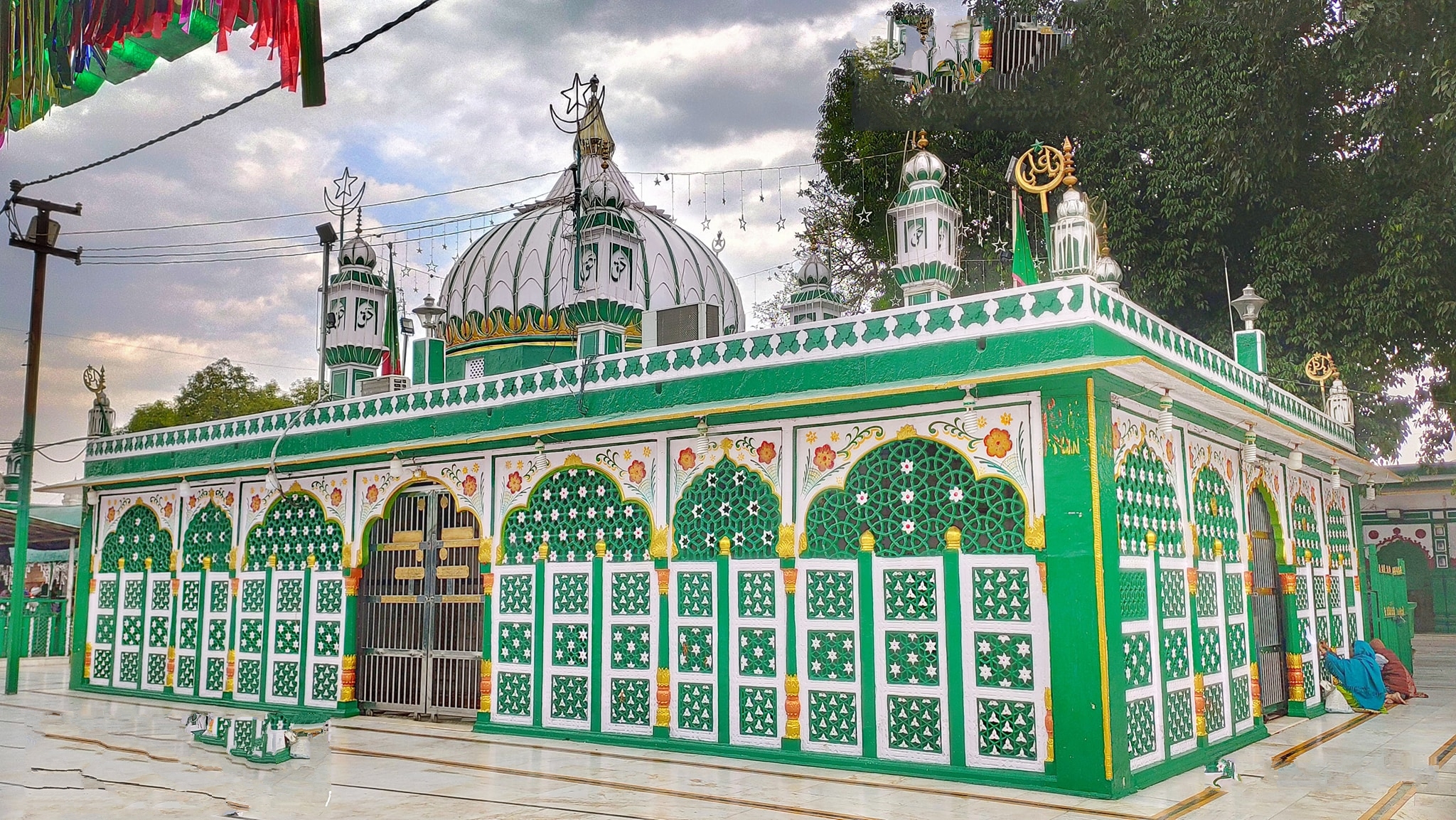Hazrat Alauddin Sabir Pak (R.A)
Hazrat Sheik Alauddin Ali Ahmed As-Sabir (R.A) was an Islamic Sufi. He is in the Chisti Silsila of Khwaja Gharib Nawaz (R.A).
He was a Sufi of Great Statue and is adored by both Hindus and Muslims. The place where his Mazar is found is in Kaliyar, in the Roorkee town of Uttarakhand, India.
Description
LINEAGE
Khwaja Sultan Ul Arifeen Sayyid Sabir Pak Ali Ahmed (R.A) was the great-grandson of Peer Ghous Ul Azam Sayyid Abdul Qadir Jilani (R.A). His father was Sayyid Abdus Salaam Abdur Rahim Jilani, son of Sayyid Abdul Wahaab Jilani, eldest son of Sayyid Abdul Qadir Jilani (R.A). His mother was Sayyidah Jamilah, the elder sister of Baba Farid Ganjshakkar (R.A) and a direct descendant of Umar Al Faruq (R.A). Alauddin Sabir Kaliyari (R.A) was born in Kohtwaal, a town in the district of Multan in 19 Rabi’ al-awwal, 592 Hijri (1196). After the death of his father, Syed Abul Rahim, his mother, brought him to Pakpattan in 1204 to Baba Fareed (R.A).
LIFE
Hazrat Sheik Alauddin Ali Ahmed As-Sabir (R.A) was an Islamic Sufi. He is in the Chisti Silsila of Khwaja Gharib Nawaz (R.A). He was a Sufi of Great Statue and is adored by both Hindus and Muslims. The place where his Mazar is found is in Kaliyar, in the Roorkee town of Uttarakhand, India.
His father passed on following not many long periods of his introduction to the world. At that point, Hazrat Sabir’s (R.A) mother conveyed him to her sibling, Baba Fareed (R.A), in Pakpattan Sharif, Pakistan. There he swore apprenticeship on the hands of Baba Fareed (R.A).
The account of his marriage is extremely fascinating. After quite a while his mother came from Harat and asked her sibling to wed his little girl to her child. Baba Farid (R.A) answered, “He steers clear of marriage. He is lost in contemplation and stunningness.” The sister said. “This is a pardon since he is a vagrant, you decay the solicitation.” Baba Farid (R.A), upon this, hitched away his little girl, Khadija, to him. During the night when the lady went into the room, she discovered him lost in supplications. When completed, he asked what her identity was. She answered, “your better half!”
Hazrat Sabir (R.A) said. “How might he oblige two in my heart? I have as of now it to one.” As he expressed the words a fire consumed the lady of the hour to cinders.
Baba Fareed (R.A) depended on him for the obligation of dissemination of food (Langar). He acknowledged this obligation joyfully and in the middle of connected himself in supplications. He abstained from his obligations well. He did not share a single piece of the food (Langer), kept a diet and went to the wilderness, and ate wild berries and leaves. He carried out his responsibilities for a very long time. He implored consistently and his abstentions were rarely upset. Regular and constant fasting and eating leaves and wild food made him feeble. At the point when his mother returned again and saw him, she grumbled to his sibling (Baba Fareed R.A) of his shortcoming. Baba Fareed (R.A) called upon him and asked for an explanation. Sabir Pak (R.A) answered, “You requested me to disperse the food and not to share from it”. Baba Fareed (R.A) accepted him cheerfully and commented “He is SABIR (Patient)”. From that day forward He got acclaimed with the name of “SABIR”.
MIRACLES
Before he passed on, he directed his teachings that when he dies nobody should contact his body. Nobody will give an internment shower, and nobody will cover him, however, they (supporters) should stand by until a man will come riding on a horse in white shading garments and he will offer a shower to his body, before that nobody should contact the body least, they will die.
After an hour, they heard the sound of a pony coming and after a couple of moments, they saw there was an individual in white garments, and he was on a horse. The pony man descended and took the dead assortment of Hazrat Sabir Piya (R.A) and went inside a cabin and took some water and gave him the entombment shower, everybody was stunned and confused about who is he and what is happening inside the house. Sooner or later he alone brings the dead body out and began making lines for offering his internment petition and subsequent to recounting the supplication he at that point covered his dead body and was prepared to leave. At that point of Sabir’s pupil halted him and asked, “Who are your goodness fortunate individual, who offered a shower, kindly show us your face”, however that pony man disagrees on showing his face, staying unyielding about it, they asked once more. So, the pony man eliminates his drape over the face and the assembly saw, it was none other except for Sabir Piya (R.A) himself. They asked “Hazrat what is this”, at that point Hazrat Sabir Piya (R.A) replied and showed them the significance of the inquiry Fana and Ba’qa, that what you just saw the body that is (Fana) it must be layer with soil again and it will die. What you see currently is (Ba’qa) always failing to die, the soul, that Allah gave me which came from paradise and saying this he vanished. So, this was the response to the inquiry that one of his supporters posed to him one day what is the importance of Fana and Ba’qa so he satisfied it and showed them the significance of his burial service.
LEGACY
The curse of Hazrat Sabir Piya (R.A) remained in the city of Kaliyar and nobody dared to venture beyond the outer limit of the desolate area that had incurred the wrath of Hazrat Sabir Piya (R.A), until the time of Hazrat Qutb-e-Alam Abdul Quddus Gangohi (R.A), the sixth khalifa of the Sabiri silsila.
On 4 Rabi-us-Sani 907 AH, more than 200 years after the demise of Hazrat Sabir Piya (R.A), Hazrat Abdul Quddus Gangohi (R.A), spurned by his determination to build a mausoleum made way for Kaliyar with a party of 150 people including khalifas, sheiks, and mureeds. When this huge assembly reached Kaliyar, Hazrat Abdul Quddus (R.A) went into a state of muraqaba (meditation) and entered into spiritual communion with the saint. He pleaded with the saint to end his Jalal (wrath) on the area so that he may build his mausoleum for the people to benefit. Hazrat Sabir Piya (R.A) granted his wish and agreed to bless those that visit the site. Hazrat Abdul Quddus (R.A) and his group reached the tomb for the first time in more than two centuries and they found that it was still being protected by Hazrat Jamaluddin Abdaal and his party of 99 jinns. Hazrat Abdul Quddus (R.A) and his group began to construct a mausoleum from kutcha (sandy) materials around the tomb for the first time after the saint’s demise. Having finished, they offered Salat-ul-Shukr (prayer of gratitude) and departed from Kaliyar. Hazrat Abdul Quddus (R.A) used to return to Kaliyar on the 5th of each month to perform fateha.
On 16 Rajab 928 AH, 21 years after Hazrat Abdul Quddus (R.A) first entered Kaliyar, Sultan Ibrahim Lodhi of Delhi provided finances to build a pucca (concrete) mausoleum over the tomb of Hazrat Sabir Piya (R.A). With this money, Hazrat Abdul Quddus (R.A) ordered Jamaluddin Abdaal to purchase the necessary material and to accompany him to Kalyar to assist him in constructing a new mausoleum over the tomb. They reached Kaliyar on 5 Jamadi-ul-Awwal 928 AH and started work on the 15th. Jamaluddin Abdaal and his 99 jinns also assisted with the construction and the new mausoleum were ready in 3 months and 7 days, after which the party returned to Gangoh.
On the 15th day of Rabi-ul-Awwal, each year Urs celebration is held at the mausoleum and in the dargah.













